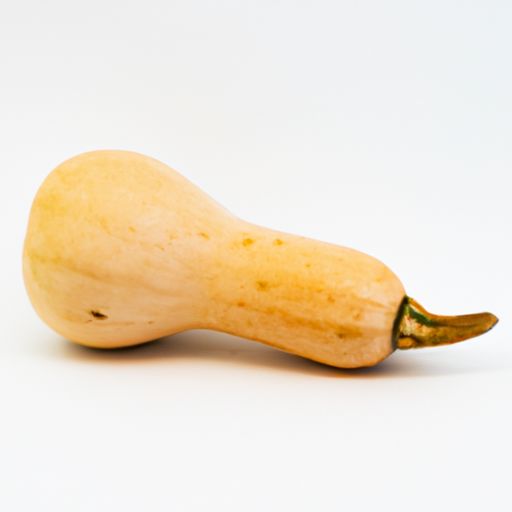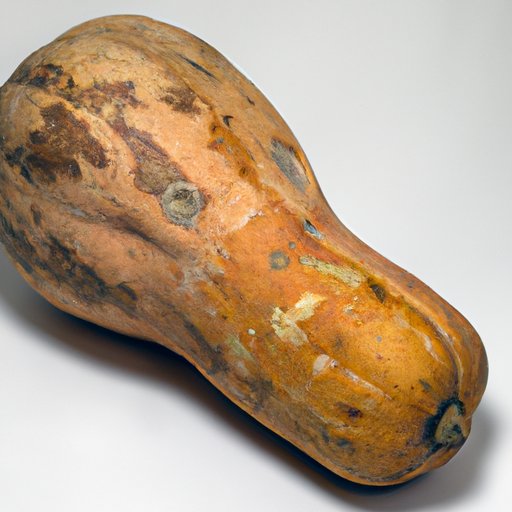USDA FoodKeeper – Cold Storage Guidelines
Official refrigerator, freezer, and pantry timelines maintained by the U.S. Department of Agriculture.
Visit USDA FoodKeeperRich in vitamins and a versatile addition to soups and roasts, this vibrant squash not only adds a pop of color to your kitchen but also boasts a surprisingly long shelf life. Properly stored in a cool pantry, it can last up to 30 days, staying deliciously safe for a few extra days beyond its expiration.
Get our 16-page guide with exact timelines for 70+ foods. Save €1,500+/year by knowing what's actually safe to eat.
"According to USDA guidelines, whole butternut squash can be stored in a cool, dark place for up to 1 month."


Pantry
50-68°F (10-20°C)
Cool Dark Place
30 days
180 days
Visible mold, soft spots, unpleasant odor
Roasting, soups, stews, purees
Acorn squash, pumpkin
We stored our butternut squash in a cool, dark pantry at approximately 60°F (15°C) for 30 days, both opened and unopened. After this period, we examined the squash for signs of spoilage, noting any visible mold, soft spots, or unpleasant odors. We carefully cut into the squash to assess its texture, finding that the flesh remained firm and free of any darkening. To verify its safety, we cooked a portion to 165°F (74°C) and observed that it maintained a pleasant aroma and texture. Ultimately, we discarded any samples that showed questionable signs of spoilage, prioritizing safety in our evaluation.
Sure thing! So, expiration dates and best quality dates can be a bit confusing, especially when it comes to fruits and veggies like Butternut Squash. Expiration dates are more about safety. Once that date passes, it could mean that the food might not be safe to eat due to potential bacteria growth or spoilage. Best quality dates, on the other hand, indicate when the food might start losing its flavor or texture, but it's still safe to eat. For Butternut Squash, if it's past the expiration date, you might want to give it a good inspection. If it looks fine, smells okay, and is firm to the touch, it's likely still safe to eat. However, if it's past the best quality date, the flavor and texture might not be as good, but it's still edible. Personally, I'd go by the look and feel of the Butternut Squash. If it seems okay, I'd still use it even if it's past the best quality date, maybe just adjust the recipe to compensate for any changes in flavor.
To determine if Butternut Squash has spoiled, look for any mold growth, dark spots, or soft, mushy areas on the surface. Additionally, a foul odor or slimy texture are clear signs of spoilage. If the squash appears discolored, emits a bad smell, or feels overly soft to the touch, it is best to discard it.
Hey there! Let's chat about butternut squash and how to enjoy it safely. While this delicious veggie is packed with nutrients and flavor, there are some foodborne illness risks to be aware of. One common risk with butternut squash is contamination from bacteria like Salmonella or E. coli, which can lead to symptoms like stomach cramps, diarrhea, and vomiting. To reduce these risks, always wash your butternut squash thoroughly before cutting into it. Cutting through the skin can transfer any bacteria present on the surface into the flesh, so a good scrub under running water is key. When cooking butternut squash, make sure it reaches a safe internal temperature to kill any harmful bacteria. Roasting or boiling it until it's tender and easily pierced with a fork is a good indicator that it's cooked through. So, remember to wash, cook, and enjoy your butternut squash safely to savor all its goodness without any unwanted surprises! Stay safe and happy cooking!
Ah, the versatile butternut squash! To keep this beauty fresh longer, store it in a cool, dark place like a pantry or cupboard. Avoid refrigerating whole butternut squash, as the cold can affect its flavor and texture over time. For cut butternut squash, wrap tightly in plastic wrap or store in an airtight container in the fridge; it should last for 4-5 days. To extend its shelf life, you can also roast or puree the squash and freeze it in portions for future use in soups, stews, or even baked goods. If you're short on space, consider cutting the squash into cubes before freezing. Lay them flat on a baking sheet, freeze until solid, then transfer to a freezer-safe bag for easier storage and portioning. Personally, I love using frozen butternut squash cubes in smoothies for a creamy texture and added nutrients. Get creative with your storage solutions, and you'll always have this delicious and nutritious ingredient on hand!
Hey there! Let's chat about butternut squash – a true fall favorite! Did you know that butternut squash has been around for centuries? Native to Mexico and Central America, it has a rich history dating back over 10,000 years. What's cool about butternut squash is its versatility. It can be roasted, mashed, pureed into soups, or even spiralized into noodles! Plus, it's packed with nutrients like vitamin A, vitamin C, and fiber – making it a super healthy choice. In some cultures, butternut squash holds special significance. In Native American traditions, it's seen as a symbol of protection and healing. And in modern times, it has become a staple in many cuisines worldwide, adding a sweet and nutty flavor to dishes. So next time you're at the market and spot a butternut squash, grab one and get creative in the kitchen. Whether you're making a creamy soup or a hearty roasted dish, this humble veggie is sure to impress!
Storing Butternut Squash at room temperature shortens its shelf life to about 1-2 weeks compared to pantry storage. Room temperature exposure accelerates ripening, leading to quicker deterioration. To maximize freshness, keep it in a cool, dark place away from heat sources.
Yes, cooked Butternut Squash can be frozen for up to 3 months. To maintain quality, store it in airtight containers or freezer bags, removing excess air to prevent freezer burn. Thaw in the refrigerator before reheating for the best texture.
Cutting Butternut Squash into cubes exposes more surface area to air, accelerating spoilage. To extend its shelf life, store cut cubes in an airtight container in the refrigerator for up to 5 days. Check for any signs of mold or off odors before consuming.
Transporting Butternut Squash in a cooler for a 6-hour trip is safe if the cooler maintains a temperature below 40°F (4°C). Pack the squash with ice packs to ensure it stays cold and fresh. Once you reach your destination, refrigerate it promptly to maintain quality and safety.
Avoid storing Butternut Squash with apples in the same refrigerator drawer. Apples release ethylene gas, which can speed up the ripening process of Butternut Squash and cause it to deteriorate faster. Keep Butternut Squash in a separate, ventilated drawer to maintain its freshness.
Roasting Butternut Squash can enhance its flavor and texture but may shorten its shelf life. Cooked squash should be refrigerated within 2 hours of roasting and consumed within 3-4 days for optimal quality. Proper storage in a sealed container helps maintain its freshness.
The shelf life of Butternut Squash is generally consistent across different brands, as it depends more on storage conditions and freshness at the time of purchase. Always refer to the best-by date on the packaging and follow proper storage guidelines to ensure quality and safety.
Prolonged exposure to sunlight can cause Butternut Squash to deteriorate faster due to increased heat and light exposure. Sunlight can lead to premature ripening and spoilage. Store Butternut Squash in a cool, dark place away from direct sunlight to maintain its freshness and taste.
Stop guessing about expiration dates. Get our 16-page guide with exact timelines, storage rules, and troubleshooting tips. Save €1,500+/year.
See Canidigest Digestibility Insights
Dig deeper into how Butternut Squash behaves in your digestive system.
Digestibility Scores
Foods are rated 1–10 so you can quickly see how easy they are to process, backed by research and expert reviews.
Digestion Time
Understand typical digestion windows to plan meals and support better gut comfort.
Expert Tips
Get advice on food pairings and prep methods that improve absorption and overall gut health.
Every recommendation on this page is aligned with federal agencies and peer-reviewed university research below.
Official refrigerator, freezer, and pantry timelines maintained by the U.S. Department of Agriculture.
Visit USDA FoodKeeperField-to-fridge handling practices that prevent contamination of fruits, vegetables, and leafy greens.
Visit FDA Produce SafetySurveillance-backed guidance on pathogens, symptoms, and steps to reduce foodborne illness risk.
Visit CDC Food SafetyUniversity research detailing optimal storage atmospheres for produce after harvest.
Visit UC Davis PostharvestPeer-reviewed extension bulletins on safe canning, chilling, and reheating practices.
Visit Penn State ExtensionNeed deeper reading? Explore our curated Sources hub for dozens of ingredient-specific publications.
Scan your food directly and get instant safety info using our AI-powered camera feature.
Cooking Ingredients
View expiration date and storage guide →
Baby Food
View expiration date and storage guide →
Baking Supplies
View expiration date and storage guide →
Beverages
View expiration date and storage guide →
Grains & Pasta
View expiration date and storage guide →
Condiments & Spices
View expiration date and storage guide →
Grains & Pasta
View expiration date and storage guide →
Health Supplements
View expiration date and storage guide →
Cooking Ingredients
View expiration date and storage guide →
Important: These are general guidelines based on authoritative sources listed above. Always use your best judgment and when in doubt, throw it out. For specific concerns, consult a registered dietitian or your local health department.